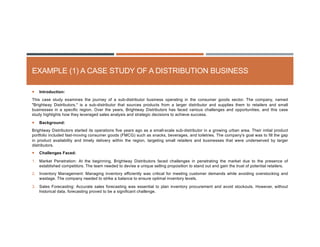Here is a potential example situation where sales analysis would be beneficial for a retail store manager:
As the manager of an electronics retail store, I am facing challenges with slow smartphone sales over the past few months. Conducting a thorough sales analysis could provide valuable insights into why smartphone sales have declined. The analysis could reveal things like:
- Which smartphone models are selling best/worst and why (features, pricing etc.)
- Demographic profiles of top smartphone customers to help target new customer segments
- Impact of competitor pricing/promotions and how to better position our offerings
- Effectiveness of our current smartphone marketing campaigns and where to optimize spending
- Opportunities for cross-selling smartphone accessories or warranty plans

















